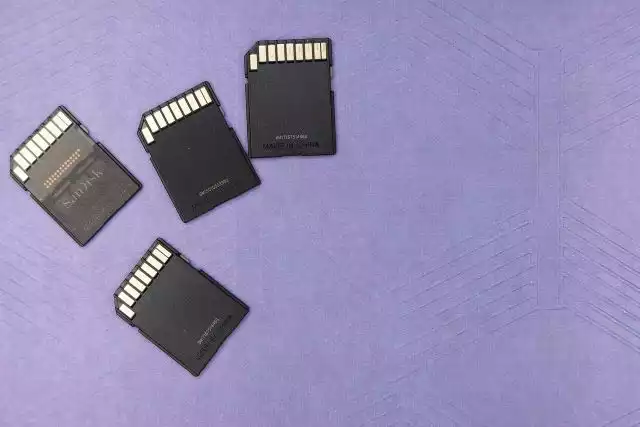
Usually talking, more capability is much better, however identifying ability takes no initiative on our component– it’s normally composed plainly on package. Capability on its own does not rack up a lot of factors unless it’s a jump from the norm, nevertheless …
That claimed, SSDs are still a relatively young modern technology, and NAND blocks/cells can just be contacted a lot of times. We make unique note of the TBW scores for SSDs. That’s an acronym for terabytes created, or the variety of terabytes that might be composed prior to a drive lacks replacements (overprovisioning) for damaged cell blocks.
Naturally, speed is nothing if a device gives up the ghost in 6 months. HDD failure has actually ended up being gradually rarer since the negative old days when up to 15 percent of hard disk drives stopped working annually. Early SSDs additionally had their issues, however the only problem we’ve become aware of recently was with the SanDisk Extreme Pro line. Every SSD we have actually examined is still going strong, as are all the hard drives from the last 5 years approximately.
Air conditioner adapters are required with 5.25-inch disk drives (still the only way to obtain more than 8TB in a solitary unit!), and with very large-capacity USB 3.x SSDs. Solitary, external 2.5-inch hard disk drives seldom call for an air conditioning adapter; nevertheless, some RAID systems with greater than one drive will. A minimum of non-Thunderbolt kinds.
It’s especially true for 2.5-inch outside hard drives, which can’t soak up nearly as several G’s as an SSD. With desktop computer drives, we additionally rate such security– i.e., we examine for non-skid feet, and so on.
Fundamental performance obviously depends on the innovation included: HDDs, SSDs, USB, Thunderbolt, etc. We run standards and carry out real-world procedures to identify its rate relative to others of the exact same ilk. Efficiency relative to a device’s peers in addition to in the grand scheme counts significantly in the final ranking. There’s much more granular info on our testing approach and factor to consider below.
One exception to this is when utilizing Thunderbolt generational adapters (Thunderbolt 2 to Thunderbolt 3/4), which may not go through power. In that case, external power, or a dock with power, may be needed.
… the cost per gigabyte counts greatly in our analyses. That stated, the star ranking is weighted more toward the quality of the item, not just how much it sets you back. However all things being equivalent, the cost per gigabyte can tip the scales.
One point we can inspect is exactly how well an outside gadget drops heat– the general enemy of electronics. If the temperature of an SSD obtains too expensive, the controller will certainly slow down down/throttle procedures to reduce said temperature to stay clear of damage to the elements.
Offered the restricted time we have between screening and publication, one hundred percent accuracy on long-term reliability is difficult. We keep our examination devices in solution, however it can take years for an issue to emerge.
Connection, i.e. the transport protocol or bus kind, is the essential sign of expected efficiency and compatibility and clearly the first thing we consider. Very compatible 5Gbps USB SSDs will max out somewhere southern of 500MBps, while likewise extremely suitable 10Gbps USB SSDs top out at around 1GBps.
Mentioning which, both USB 4 and Thunderbolt deliver more power over their connections than older USB 3.x, which is why you usually won’t require exterior power unless, as stated, there’s greater than one drive in the unit.
PCWorld has been evaluating outside storage space since the 1980s and the era of drooping drives, though nowadays we stick with SSDs and the periodic hard disk drive. Whatever else appears, well … charming. Not to mention, drearily slow-moving.
Thumb drives are generally the smallest and most portable. If a tool is designed to be portable, the overall ease of transport is obviously taken into consideration.
20Gbps USB 3.2 × 2 drives can reach 2GBps, but just on the still somewhat-rare 3.2 × 2 connector or USB 4. While Macs (and several Computer Thunderbolt ports) support USB 4 20Gbps, they only support 10Gbps when making use of USB 3.2 × 2 SSDs. USB 4 and Thunderbolt 3/4 SSDs can operate at 40Gbps, or around 4GBps.
We criteria utilizing CrystalDiskMark 8 and AS SSD 2.0. There are various other perfectly valid criteria, however these are two whose outcomes have regularly matched the degree of the modern technology involved throughout the years.
Keep in mind that both our 48GB and 450GB VHD documents are loaded with data, to reduce the impact of any compression strategies. Some controllers can press all nos with illumination rate, which throws a monkey wrench right into the outcomes.
In USB 4 and Thunderbolt 3’s instance, it’s not actually specified that they sustain anything greater than 20Gbps. Yeah, it’s a mess of a “common,” yet we always check drives on their native bus at their greatest feasible speed. Note that the Thunderbolt 4 ports on our test bed also sustain all flavors of USB, consisting of USB 4.
Several NMVe SSDs utilize DRAM for primary caching and some use your computer’s very own memory as cache (Host Memory Buffer/HMB). The previous greatly improves arbitrary efficiency, while the latter can really boost consecutive performance.
The second drive is really a 58GB RAM disk that is much faster than the fastest NVMe SSD we’ve examined to date.
Keep in mind that as a drive fills out, efficiency might experience as there is less NAND available to allocate as additional cache. We test with empty drives yet caution customers that efficiency might degrade over time. It’s likewise why we recommend that you overbuy in regards to capacity.
Additionally, we have a big collection of arise from years past to compare. Occasionally, at vendor request we will certainly run other benchmarks such as ATTO or IOmeter to replicate a specific process that a drive has been maximized for.
PCWorld has been reviewing outside storage space considering that the 1980s and the period of saggy drives, though these days we stick with SSDs and the occasional tough drive. Every SSD we have actually checked is still going strong, as are all the difficult drives from the last 5 years or so.
Now and then, should any type of aberrations develop on the primary test bed, we additionally evaluate on our older AMD examination bed. This consists of an MSI MEG X570 motherboard socketing an AMD Ryzen 7 3700X 8-core CPU and 64GB of Kingston DDR4. The very same software is utilized as on the Intel system. This device is additionally the software application test platform.
To increase the standards and give customers a concept of what they’ll really see under Windows, we carry out a series of real-world transfers. Firstly, a 48GB folder packed with smaller folders and documents, and a single 48GB digital hard drive (VHD) written to and read from the tool. The second drive is really a 58GB RAM disk that is faster than the fastest NVMe SSD we have actually examined to day. However it’s reaching be a close contest, so we might have to generate other ways in the future.
It’s especially real for 2.5-inch external difficult drives, which can’t take in almost as lots of G’s as an SSD. We usually have to revise the 450GB file a number of times, depending on the capacity of the SSD, prior to the drive will certainly drop to its native 3-bit/4-bit compose speed, which can differ anywhere from 150MBps (sluggish QLC) to almost 1GBps (faster TLC).
A controller can compose 3-bit (Three-way Level Cell/TCL) or 4-bit NAND at either their indigenous bit deepness or, much faster, as on/off 1-bit SLC. This single-bit writing is used for additional caching. Information is later rewritten at the greater little bit depth to recover the lost area.
NVMe SSDs, as they have actually grown, have actually damaged the almost 1:1 proportion of benchmark to real-world transfer efficiency that existed right up through SATA SSDs– substantially, when it concerns inner SSDs, and to a lesser, but still recognizable degree with bus-constrained outside SSDs.
The modern technology inside a gadget (SATA, NVMe) also has a whole lot to do with its anticipated efficiency. For example, a SATA SSD will never go much faster than 500MBps even across USB 4 or Thunderbolt 3/4. SATA HDDs hardly ever leading 250MBps (3.5-inch) or 120MBps (2.5-inch).
Our test transfers continue at a far slower pace than what’s in fact feasible, and spoken of by the standards. A drive qualified of reviewing at 15GBps in benchmarks, will barely take care of 4GBps under Windows.
For Mac-oriented products or those evaluated for Macworld, a first-gen Mac Studio M1 Max with 32GB of memory and a 1TB interior SSD is employed. This system has the previously mentioned fascinating restriction typical to all Apple Silicon Macs– it supports USB 4 20Gbps, however does not sustain USB 3.2 2 × 2 20Gbps. Sigh.
NVMe on the other hand is quickly enough that the bus is a major limiting element. For example, the fastest inner PCIe 5.0 NVMe SSD we’ve examined clocked nearly 15GBps, while the fastest Thunderbolt SSD might muster up only 4GBps.
How suppliers manage this second caching technique mainly impacts performance throughout very long creates. Some fix the quantity of NAND that can be made use of for second caching, while some allocate it dynamically. We frequently need to revise the 450GB file several times, depending on the capability of the SSD, before the drive will drop to its native 3-bit/4-bit create rate, which can differ anywhere from 150MBps (slow-moving QLC) to nearly 1GBps (faster tender loving care).
As noted, our general ratings show a lot of variables, but the performance/cost proportion carries without a doubt one of the most weight. And with just a 10-level system (5 complete celebrities, 5 half celebrities), the star scores aren’t specifically nuanced.
For that reason, it is very important to in fact read the testimonials for the particulars, and at least the pros/cons to see the major strengths and weak points when attempting to choose which storage space tool you intend to get.
Primarily since of the way they cache data to attain and keep ideal efficiency. Primary caching is either done with onboard DRAM, which uses the fastest arbitrary performance, or in the instance of less costly Host Memory Barrier (HMB), your device’s system memory.
We check all storage items on a devoted X790 (PCIe 5.0) motherboard/i5 -12400 CPU combination with two Kingston Fierceness 32GB DDR5 components (64GB of memory overall). The 48GB transfer tests use an ImDisk RAM disk taking up 58GB of the 64GB total memory.
All HDDs to a little degree, and SSDs to a big degree create slower as they fill up so the benchmark numbers we publish are best case. Drive stagnation is why we suggest that you always purchase the very least two times the SSD capacity that you might think you need. This is not normally essential with HDDs, but a great idea.
The number of chips on an SSD can additionally impact performance, as the more chips there are, the a lot more information courses there are to shotgun information over. This is, once more, why we caution you in each evaluation that our outcomes apply only to the capability SSD we examined.
The factor writing at higher bit depths is slower is due to the error-checking called for to determine if the correct voltage (among 8/16 degrees with TLC/QLC) was written to a cell, as opposed to the straightforward charged/not billed binary of 1-bit SLC.
1 drive2 SSD
3 USB
4 USB SSDs
« Got a new Copilot+ PC? Don’t rush to install ChromeGamesir Nova HD review: A budget controller contender »
